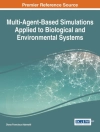This collection focuses on the development of novel approaches to address one of the most pressing challenges of civil engineering, namely the mitigation of natural hazards. Numerous engineering books to date have focused on, and illustrate considerable progress toward, mitigation of individual hazards (earthquakes, wind, and so forth.). The current volume addresses concerns related to overall safety, sustainability and resilience of the built environment when subject to multiple hazards: natural disaster events that are concurrent and either correlated (e.g., wind and surge); uncorrelated (e.g., earthquake and flood); cascading (e.g., fire following earthquake); or uncorrelated and occurring at different times (e.g., wind and earthquake). The authors examine a range of specific topics including methodologies for vulnerability assessment of structures, new techniques to reduce the system demands through control systems; instrumentation, monitoring and condition assessment of structures and foundations; new techniques for repairing structures that have suffered damage during past events, or for structures that have been found in need of strengthening; development of new design provisions that consider multiple hazards, as well as questions from law and the humanities relevant to the management of natural and human-made hazards.
สารบัญ
Part I. Introduction.- 1. An Introduction to Multi-Hazard Approaches to Civil Infrastructure Engineering.- Part II. Probabilistic Methods for Risk Analysis.- 2. Correlated Maps for Regional Multi-Hazard Analysis: Ideas for a Novel Approach.- 3. Supporting Life-Cycle Management of Bridges Through Multi-Hazard Reliability and Risk Assessment.- 4. Natural Hazard Probabilistic Risk Assessment Through Surrogate Modeling.- 5. Risk and decision-Making for Extreme Events: Climate Change and Terrorism.- Part III. Earthquakes.- 6. Progressive Collapse Simulation of Vulnerable Reinforced Concrete Buildings.- 7. Existing Buildings: The New Italian Provisions for Probabilistic Seismic Assessment.- 8. Multi-Hazard Multi-Objective Optimization of Building Systems with Isolated Floors Under Seismic and Wind Demands.- 9. Energy Efficiency and Disaster Resilience: a Common Approach.- Part IV. Fire, Blast, Shock and Impact.- 10. Fire Following Earthquake: Historical Events and Evaluation Framework.- 11. Progressive Collapse Resistance for Steel Building Frames: a Cascading Multi-Hazard Approach with Subsequent Fire.- 12. Innovative Strategies for Enhancing Fire Performance of FRP-Strengthened Concrete Structures.- 13. Experimental and Analysis Methods for Blast Mitigating Designs in Civil Infrastructure.- Part V. Wind Hazards.- 14. Woodframe Residential Buildings in Windstorms: Past Performance and New Directions.- 15. An Engineering-Based Catastrophe Model to Predict Tornado Damage.- 16. Performance-Based Hurricane Engineering: A Multi-Hazard Approach.- 17. Wall of Wind Research and Testing to Enhance Resilience of Civil Infrastructure to Hurricane Multi-Hazards.- Part VI. Geo-Hazards.- 18. Accounting for Unknown Unknowns in Managing Multi-Hazard Risks.- 19. Bayesian Risk Assessment of a Tsunamigenic Rockslide at Åknes Norway.- 20. Rock Moisture Dynamics, Preferential Fow, and the Stability of Hillside Slopes.- 21. Innovation in Instrumentation, Monitoring and Condition Assessmentof Infrastructure.- Part VII. Societal Impact of Extreme Events.- 22. Theories of Risk Management and Multiple Hazards.- 23. Disaster Risk Reduction Strategies in Earthquake-Prone Cities.- 24. Disaster Resilience of Communities: The Role of the Built Environment.- 25. Digital Technologies, Complex Systems, and Extreme Events: Measuring Change in Policy Networks.












